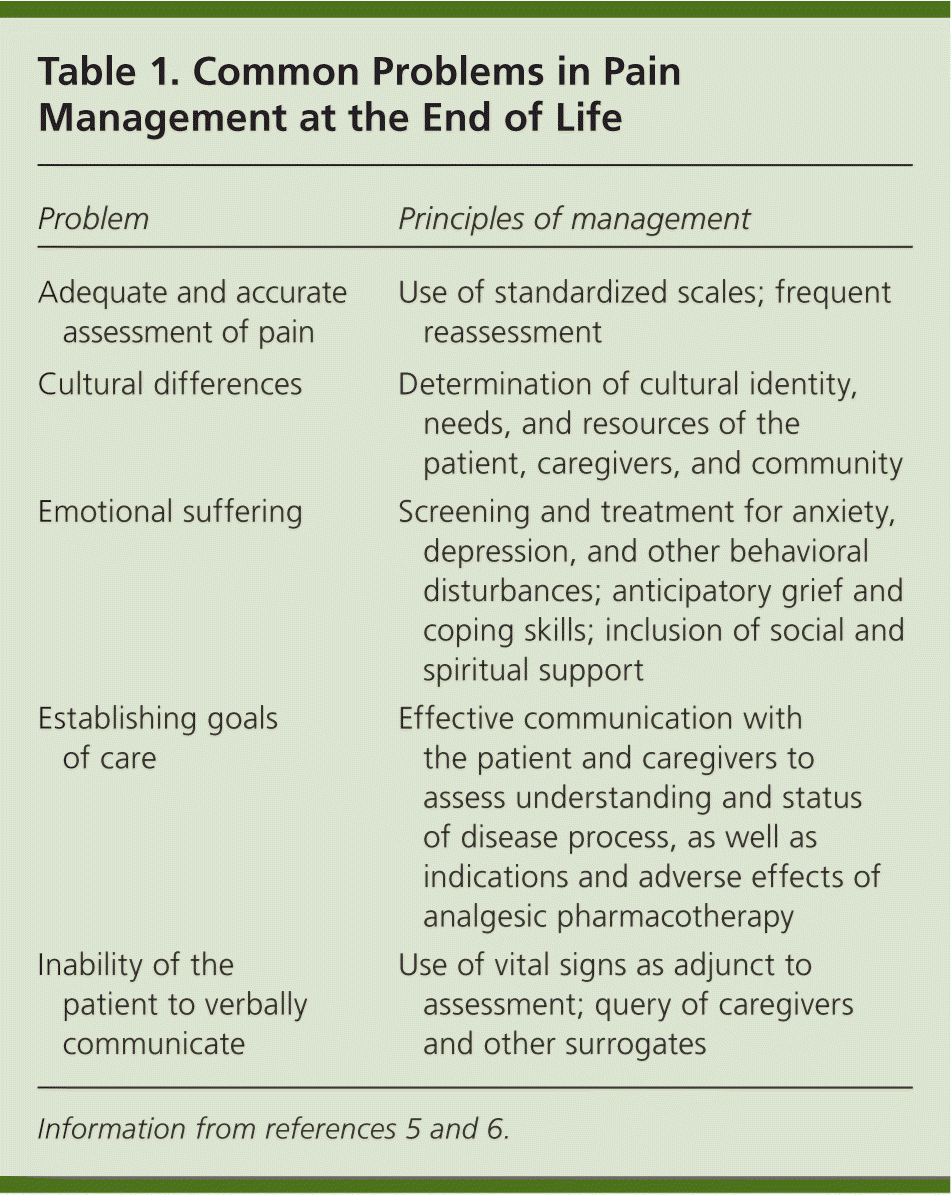
Am Fam Physician. 2014;90(1):20-22
Related article: Pharmacologic Management of Pain at the End of Life
Author disclosure: No relevant financial affiliations.
The shift to an aging population and technologic advances in medical care have transformed the experience of serious illness and dying to an ongoing series of chronic and progressive events. The growing number of patients in the United States who need quality care at the end of life has contributed to the expansion of hospice and palliative medicine, a field recently granted specialty status by the American Board of Medical Specialties.1 Palliative care consultations have been shown to reduce costs and improve quality of care, resulting in an increased demand but a projected shortage of hospice- and palliative medicine–trained physicians.2 Family physicians are well positioned to meet this workforce need by nature of their training and their emphasis on continuity of care, therapeutic relationships, and scope of care for the whole family. To provide quality care for seriously ill and dying patients, however, family physicians need a basic skill set that includes facilitating discussions on advance planning and goals, identifying and treating depression and anxiety, and managing pain and symptoms at the end of life.1
The article by Drs. Groninger and Vijayan in this issue of AFP provides a good introduction to the pharmacologic management of pain in palliative and end-of-life care.3 Some key themes align with the National Consensus Project's Clinical Practice Guidelines for Quality Palliative Care.4 Updated in 2013, the guidelines focus on two areas in the domain of physical aspects of palliative care, such as pain and symptom management.
The first guideline recommends that the assessment and management of pain and other symptoms be based on the best available evidence, with the overall goal of reducing symptoms to a degree that is acceptable to the patient.4 Several criteria inform this guideline and address some of the challenges faced by primary care physicians in the pharmacologic management of pain. First, many patients and their caregivers are reluctant to consider opioid pharmacotherapy. Such barriers must be identified before initiating treatment. Physicians should address common misconceptions about the potential for addiction, respiratory depression, adverse effects, and the hastening of death.4 Next, physicians should create an opioid risk assessment and management plan that is concordant with institutional, state, and federal regulatory agencies if long-term opioid therapy is being considered.4 Finally, validated symptom assessments, such as pain scales, need to play a central role in determining treatment response and gauging any adverse effects of therapeutic interventions.4
The second guideline recognizes that pain assessment and management should take into account the larger context of the patient and family, as well as the disease status and associated comorbidities.4 For example, although patients with severe impairment can be difficult to assess, the reliability of pain reports in patients with dementia or cognitive impairment is comparable to that of patients with normal cognition.5,6 For these individuals, physicians should provide analgesia empirically, especially for conditions known to be painful (e.g., osteoarthritis) and before procedures, and they should be creative in communication approaches for pain assessment (e.g., eliciting simple “yes” or “no” responses).5,6 Additionally, family and other caregivers can be an important collateral source of information on actions and interventions that may reduce or increase pain.5,6
Palliative care generally begins with diagnosis of a life-limiting disease and initiation of an ongoing conversation on the goals of care and treatment. This often begins in patient-centered medical homes, continues through acute hospitalizations, and may conclude in long-term care facilities.7 At each point, family physicians may be called on to provide primary palliative care and can expect to encounter nonpharmacologic challenges in managing pain.1 Several common problems and principles for addressing these challenges are presented in Table 1.5,6 Basic pharmacologic pain management—with consultation of palliative care specialists for complex or refractory problems—needs to be a skill that is developed and maintained in primary care so that all Americans have access to high-quality, patient-centered care at the end of life.1

| Problem | Principles of management |
|---|---|
| Adequate and accurate assessment of pain | Use of standardized scales; frequent reassessment |
| Cultural differences | Determination of cultural identity, needs, and resources of the patient, caregivers, and community |
| Emotional suffering | Screening and treatment for anxiety, depression, and other behavioral disturbances; anticipatory grief and coping skills; inclusion of social and spiritual support |
| Establishing goals of care | Effective communication with the patient and caregivers to assess understanding and status of disease process, as well as indications and adverse effects of analgesic pharmacotherapy |
| Inability of the patient to verbally communicate | Use of vital signs as adjunct to assessment; query of caregivers and other surrogates |
